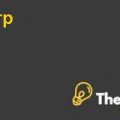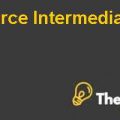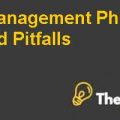Industry Background:
Greeting card industry was dominated by three major companies in 1988 named as American Greetings,Gibson (publicly owned) and Hallmark (Private). Rest of the industry consisted of small firms that were privately owned.
The firms which produced on large scale were involved in different designing and setting up new cards. All the firms declined by 15% from (1954-1984) which included companies having less than 50 employees. Moreover they also faced high fixed cost and kept large inventory and production costs. Usually large companies used their sales personnel to distribute and sell their products to outlets. Companies put effort to increase the sales through its distribution network.
The sale of cards depend upon the season. Sometimes the sales increase due to seasonal peaks such as Valentine’s Day, Mother’s Day, Father’s Day etc. In 1987, the volume of cards sold was above 50%. Hallmark also marketed for gift books, jewelry, candles glassware etc. Similarly, American Greetings also dealt in gift wrap, college study guides, playing cards etc.
Friendly Cards Inc.
Wendy Beaumont founded Greeting Card Co. in 1978 with $15,000. The company acquired Lithograph Publishing Co. and after one year it was renamed as Friendly Cards Inc. It was publicized through offering its share at $3 per share.
In the following years, Friendly Cards grew its business operations and moved towards rapid growth.
Friendly Cards manufactured greeting cards with 1,200 designs in 1988, in which 30% of sales were from Christmas, 25% from Valentines and remaining by holiday cards whereas 25% of total sales were of packaged boxes of cards which helped to cut the cost because the producers did not have the racks in every outlet. There was no return cost because the package generally did not return. Large companies were not interested in packaging sales and paid concentration on individual card sale. Ms. Beaumont knew that most of the buyers did not prefer the perfect card for occasion; they preferred the cards which are less expensive with attractive packages at home. The operation of the business was combined with printing and packaging, the plant was operated at full capacity but some necessary work was done by outside printers.
Distribution of the company was not so much expensive. The products were either sold to central buyers for stores such as K mart, Wal-Mart etc. or the wholesalers. This system gave a low margin as it had two intermediaries that consisted of manufacturer and customers.
Friendly management included three production & shipping managers, art director, sales manager, nine officers out of which six were directors and assistant to president. The business was very sound and capital intensive. The company was successful due to good relation with banks and vendors. Its line of credit was about $6.25 million and the company borrowed 2.5 percentage points above prime rate. During peak season, trade credit amounted over $9.0 million in 1987. Friendly was interested in capital equity.
Bankers imposed two restrictions on future loans to company which were applicable at the end of 1988. The first restriction was that the outstanding bank loans would not exceed 85% of company’s accounts receivables and the other was that the total liabilities would not exceed three times the book value of net worth of company. MS Beaumont decided to keep debt to equity ratio at 2 to 1.
There were three important decisions which the company wanted to resolve. For this act, Friendly needed help from financial consultant, Ms. McConville.
The decisions were whether Friendly should invest in equipment rather than to buy its envelopes. Should Friendly Cards acquire Creative Designs Inc., a manufacturer of studio cards and the third decision was about raising equity that meant Friendly should go to the market to raise additional equity capital to minimize financial problems..........
This is just a sample partial case solution. Please place the order on the website to order your own originally done case solution.
This case solution will also come with excel calculations as well.Friendly Cards Inc Case Solutions
by William E. Fruhan Source: Harvard Business School 10 pages. Publication Date: May 10, 1993. Prod. #: 293135-PDF-ENG
Includes an analysis of the main proposals of investment capital, the acquisition of another company, the assessment tools necessary for these two possible cost, and the recommended course of action management. "Hide












